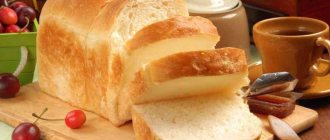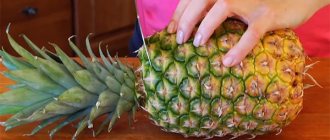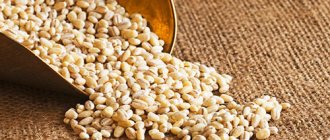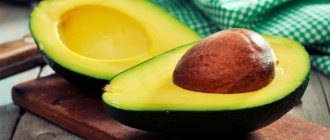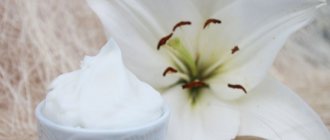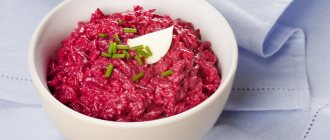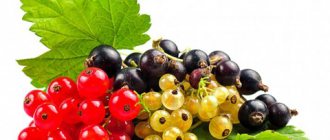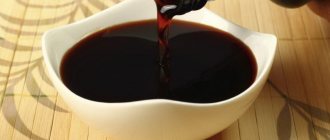Proper nutrition during breastfeeding is the key to successful lactation, rapid recovery of a woman after childbirth, and normal development and growth of the newborn. This does not mean that mom should go on a strict diet.
You only need to adhere to a strict regime for the first three to four weeks after the baby is born. Then new products are gradually introduced into the diet of the nursing mother, but at the same time you should carefully monitor the well-being and reaction of the baby and follow the recommendations.
Every mother knows that the food she eats passes into breast milk. And then the food components, along with the milk, enter the baby’s body. During the first few months, the baby’s digestion is just getting used to the new conditions. Often new food leads to severe colic, flatulence, allergies and other troubles.
Proper nutrition for a nursing mother will help avoid the problem. Please note that diet also affects breast milk production. So, some foods and drinks enhance lactation. And others, on the contrary, reduce the amount of milk. You can find a list of products to improve lactation at the link /.
Principles of nutrition during breastfeeding
- The diet of a nursing mother should contain a full range of vitamins and beneficial elements. Be sure to eat fish and meat, dairy and fermented milk products, fruits and vegetables. You can't go on a strict diet to lose weight! Such a diet will lead to health problems for the woman and the newborn;
- Meal frequency is five times a day. The menu for a nursing mother includes three main meals and two snacks. It is important to avoid overeating or undereating;
- Don't abuse it! This principle is partly related to the previous one. Overeating causes bloating and severe colic in the baby, stomach upset in the mother, and disrupts bowel movements. Even a safe product in excess leads to a negative reaction. A reasonable approach is the fundamental rule that shapes a woman’s nutrition when breastfeeding;
- When preparing dishes, give preference to stewing, baking or steaming. Fresh fruits can be eaten with caution even after two to three months after the birth of the child. Heat treatment promotes easy digestion of food, while it retains its beneficial properties;
- In the first month, follow a strict diet, exclude from the nursing mother’s menu foods that contain allergens and foods that can cause digestive disorders in the newborn;
- From the second month, new foods are introduced into the diet of a nursing mother. For the first time, try a small piece of food and monitor the child’s well-being for two days. If there are no negative consequences, the food can be eaten without fear. If the baby has an allergy or digestive problems, reduce the dose or delay administration for a month;
- Don't try several new products at the same time! It is important to know what food a newborn reacts to;
- Limit the consumption of fried, too salty, spicy and fatty foods, flour and sweets. Choose fermented milk and dairy products without additives and with low fat content;
- The menu for a nursing mother should not include processed foods, preservatives or other chemicals! Such food will lead to digestive disorders and intoxication;
- When breastfeeding, forget about alcohol. Alcoholic drinks poison the body of the baby and mother, inhibit the development of the baby and provoke diseases of the heart, blood vessels, and nerve cells;
- If there is a lack of vitamins, take special complexes for nursing mothers that are compatible with lactation and safe for babies. Read here which vitamin complexes are suitable for breastfeeding mothers;
- Drink more. Warm, abundant drinking cleanses the body, helps with viruses and enhances lactation. The minimum daily volume of liquid is two liters, taking into account that half of the volume is drinking water. A nursing mother's diet should include soups and broths, natural juices and compotes.
Introduction of sausages
You need to try a new product 3 months after the birth of the child. You should start with a small piece, monitoring the baby's reaction for 24 hours. If the baby does not have any allergic or other undesirable manifestations, then you can safely introduce sausage, increasing the amount eaten. The main thing is not to overeat.
It is permissible to eat about 250-300 grams of this product per day. However, you shouldn’t get carried away with sausage. It is better to stick to a diet and eat meat products no more than 2 times a week due to the large amount of fat and salt.
If your child develops a rash or other reaction to a new product, you need to switch to a hypoallergenic diet. If necessary, consult a specialist.
Sausage must be stored in food paper or a container. The plastic bag is not suitable for storing this product.
You can prepare boiled sausage at home. To do this you need to take the following ingredients:
- homemade minced pork - 2.5 kg
- homemade minced beef – 0.5 kg
- water and ice – 300 ml
- table salt – 60 g
- ground black pepper – 5 g
- sugar – 10 g
Cooking process:
Beat 150 ml of prepared water and beef using a blender. Add pork, water, salt, sugar, pepper and beat the mixture. Place the resulting mixture in a polyamide shell and tie it with a rope. Then put in hot water (about 40 degrees) for 15 minutes. Cook the product for 40 minutes.
Food table for nursing mothers
| Can | It is forbidden |
| Apples, bananas and pears; with caution - persimmon, pomegranate | Citrus and exotic fruits (except bananas) |
| Zucchini and pumpkin, potatoes and carrots, cauliflower and broccoli; with caution - tomatoes, eggplants, cucumbers, beets | White cabbage and radishes, radishes and horseradish, bell peppers, onions and garlic (for 4-6 months) |
| Porridge with water, after 4-5 months - with milk, semolina and multigrain porridge - after 6 months | Mushrooms and sauerkraut, pickles and marinades |
| Fermented milk and dairy products without additives and low fat content, cow's milk can only be drunk for 4-5 months | Yogurts with additives, high-fat fermented milk products |
| Lean fish and meat | Lard, smoked, fatty and salted fish and meat |
| Pasta without egg additives | Ham, sausages, smoked sausage |
| Chicken eggs - two pieces per week, quail eggs - no more than eight | Mayonnaise, ketchup, sauces |
| Unrefined vegetable and butter | Semi-finished and canned food, fast food |
| Dark chocolate, marshmallows and marshmallows, homemade cakes with minimal sugar, biscuits and oatmeal cookies | Flour products with chemical additives and dyes, milk and aerated chocolate |
| Greenery | Hot herbs and spices |
| Weak green and black tea, herbal tea and decoctions, chicory | Coffee and strong tea (possible after six months) |
| Compotes and fruit drinks, natural juices diluted with water | Carbonated drinks and alcohol |
Food and drinks
The table provides a short list of products for a nursing mother. Pediatricians and nutritionists give detailed explanations of what, when and in what quantity to consume while breastfeeding. Let's take a closer look at what a nursing mother can eat:
- Lean meat (chicken and turkey, beef and rabbit) boiled or stewed;
- Low-fat fish (pike perch, pollock and cod, hake and flounder) boiled or stewed;
- Dairy and fermented milk products with low fat content (sour cream and cottage cheese, yogurt without additives, fermented baked milk and yogurt). But use whole cow's milk with caution when breastfeeding;
- Cheeses of brine, soft and hard varieties that have undergone a short ripening process. Cheese is best consumed in a salad, casserole or with a sandwich, and not as a separate dish;
- Stewed or steamed vegetables, less often – raw. The safest and healthiest are zucchini, cauliflower and broccoli. You can also include potatoes, carrots and pumpkin in the menu of a nursing mother. You can eat cucumbers, eggplants, beets and tomatoes with caution. By the way, it is better to eat yellow tomatoes;
- Eat fruits that are peeled and peeled. A nursing mother's diet may include green apples, bananas and pears. By the way, apples are the safest fruit that you can eat in the first weeks after childbirth. Use persimmons and pomegranates with caution. Fruits should not be eaten on an empty stomach. The optimal time for taking is two hours after the main meal;
- At first, you should eat porridge with water. Nutrition during breastfeeding consists of buckwheat and oatmeal, corn and rice porridge. Semolina and multigrain porridge can be included in the diet for 5-6 months. Then start cooking milk porridge;
As for bread, it is not recommended to eat white and black bread while breastfeeding. You can eat unleavened pita bread, bread and flour products with bran. Now let's look at foods that should not be consumed while breastfeeding:
- Mushrooms are a difficult food to digest, which impairs digestion, disrupts stool and provokes poisoning;
- Marinades, sauerkraut and pickles cause intoxication in the baby due to the vinegar content and excess salt;
- White cabbage is also difficult for the body to digest and causes bloating in the baby and mother;
- Radish, radish, horseradish are “aggressive” foods that negatively affect the digestion of an infant;
- Semi-finished products, products with artificial preservatives and dyes;
- Fatty and smoked meat, lard, eat pork with caution;
- Fatty fish;
- Hot spices. You can eat onions and garlic while breastfeeding, but in limited quantities. It is recommended to introduce these vegetables into the diet of a nursing mother no earlier than 4-5 months. The norm during lactation is one clove of garlic twice a week. By the way, contrary to the opinion of many mothers, garlic, when consumed in small quantities, does not change the taste of breast milk. And parsley will help eliminate the unpleasant smell.
- Sausages and ham, smoked sausage;
- Exotic fruits, with the exception of bananas. They often cause allergies in children. In addition, chemicals are often added to imported products;
- Sweet chocolate, cakes and sweets with dyes, creams and chemical additives;
- Sauces and mayonnaise, fast food and other junk food.
We have already talked about how important it is to drink plenty of fluids while breastfeeding. Let's look at what a nursing mother can drink:
- Natural juices from apples, pears, carrots. At first, dilute the juice with water 1 to 1. Then gradually reduce the portion of water;
- Compotes of fresh and dried fruits and berries. Apples and pears, prunes and dried apricots, plums and cherries are suitable for a nursing mother. This drink stimulates the intestines and strengthens the immune system. Read how to make compote here;
- Weak black and green tea. Chamomile tea also has a positive effect on the body;
- Weak coffee is introduced into the diet of a nursing mother after 5-6 months. This is a strong pathogen and allergen that negatively affects the nerve cells and digestion of the newborn. In the first six months of lactation, coffee is replaced with chicory, which is safe for babies;
- Decoctions of fennel, cumin and anise quench thirst and stimulate the production of breast milk. In addition, you can buy special herbal tea for nursing. How to choose tea for lactation, read the article.
Carbonated and alcoholic drinks should not be included in the diet of a nursing mother! They cause severe intoxication of the newborn's body and harm the woman.
Types of bread and what kind is possible during breastfeeding
Not all flour products are allowed for women while breastfeeding, especially in the first months of the baby’s life. You should not eat baked goods containing various spices, which can lead to changes in the taste of breast milk, as well as to the development of allergies in the baby.
Types of bread:
- White. Made from wheat flour, water, yeast with the addition of vegetable oil and table salt. It is allowed to be introduced into the mother’s diet from the first months of the baby’s life. Eating white bread should start with a small dried piece. In the absence of any negative manifestations in the baby, a nursing woman can introduce a fresh product.
- Rye. It is not recommended to eat in the first month after childbirth, as well as if there are problems with the functioning of the gastrointestinal tract. Black bread during breastfeeding can cause increased accumulation of intestinal gases in the baby, colic, and increased stomach acidity. Once your child reaches two or three months of age, you can include homemade rye crackers in the menu. This product contains more beneficial compounds than baked goods made from wheat flour. After 3 – 4 months. After childbirth, it is allowed to eat regular black bread, then the children’s gastrointestinal tract will become stronger and adapt to the new food.
- Grey. Has high acidity. The calorie content of gray bread is low, so this type of product is recommended for consumption by women who want to lose excess weight.
- Corn. Pediatricians recommend that young mothers eat this type of bread during lactation, since corn flour rarely provokes allergies in infants. However, to make such bread, many manufacturers use wheat flour, as well as a large number of chemical elements that give the finished product airiness, pleasant taste, and color. Therefore, in the first months of a baby’s life, it is better for nursing mothers to avoid eating store-bought corn bread.
- Malt. This pastry is prepared from a mixture of wheat and rye flour. Malt is also added, which gives the product softness, fluffiness, and enriches the bread with useful compounds. You should start introducing malt products with a small slice (from the first month of lactation). If the child is feeling well, the mother can eat this product once every 2 to 3 days.
- Bread with bran. This type of baking is rich in fiber (about 80%), minerals, and is allowed for consumption from an early age. This bread will help normalize the functioning of the digestive tract.
- Wholegrain. It is made from wholemeal flour with the remains of grain shells and germs. Grain bread during gw, like the previous one, helps stimulate digestion.
- Pita. You can eat it from the first days of your baby’s life. Thin lavash does not have any effect on the digestion of a newborn, since it does not contain yeast and is prepared from flour, water with the addition of table salt. It is advisable to dry fluffy baked goods before eating.
- Yeast-free. Made from yeast substitute, a yeast-like substance obtained from hops. Yeast-free bread can be replaced with regular bread if your baby has digestive upset due to yeast.
- Baked goods (loaves, buns, buns). These bakery products are allowed for consumption during breastfeeding in limited quantities, starting from the age of three months. However, if an allergic reaction develops in an infant, the introduction of the product should be discontinued.
We recommend reading: Relief during breastfeeding
You can also eat bread for nursing mothers , which helps cleanse the intestines. However, it is worth choosing a product that does not contain various additives.
Menu for lactation
Pediatricians create menus by month and even week for nursing mothers. Knowing the list of permitted products, you can independently choose the diet that suits you best. Here is a sample menu by month that can be adjusted.
For the first week, you need to limit your diet as much as possible and consume only vegetable broth and apple or zucchini puree. On the tenth day, the following can be added to a nursing mother’s diet:
- Galette cookies (“Jubilee” and “Maria”);
- Dried fruits;
- Stewed vegetables (zucchini, carrots, pumpkin, carrots);
- Pasta;
- Fermented milk products: hard cheeses, fermented baked milk, cottage cheese and kefir;
- Boiled fish;
- Bread with bran.
Thus, for the first month, a nursing mother should eat as follows:
- Dietary boiled poultry, turkey, rabbit or beef;
- Vegetarian soup;
- A small amount of butter meat;
- Applesauce or baked apples and bananas;
- Olive and sunflower oil;
- Porridge with water (except semolina);
- Still drinking water, compote, decoctions and green tea.
The second or third month, in addition to the usual diet, includes raw fruits and vegetables, low-fat borscht. After the third month, gradually introduce potatoes, meat broths, eggs and other permitted foods. After six months, you can diversify your diet as much as possible and start eating semolina porridge, soups, coffee and strong tea.
You can return to your usual menu 1-1.5 years after the baby is born. However, remember that proper nutrition is necessary not only for the full development and growth of the child, but also for you. This is the key to a beautiful and slender figure, good health and well-being.
Why are doctors against sausages?
If you ask doctors whether it is allowed to eat sausages during lactation, their answer will be more likely negative. Both mother and child now need vitamins and microelements, since the woman is recovering from childbirth and has a lot of physical and psychological stress. The baby is growing, his immune system and other body systems have not yet formed, and they are very dependent on the food they receive. There is nothing healthy for either of them in the sausage.
But there are a lot of components that can harm the well-being and health of the mother and newborn. These are soy protein, dyes, preservatives, emulsifiers, sodium nitrite. In cheap sausage, instead of meat, you may find by-products that are very fatty, as well as cartilage and tendons. And even a small amount of it eaten by the mother can cause several serious problems at once:
- increased gas formation, colic in a child;
- allergic manifestations due to dyes or milk protein, which is often used by sausage manufacturers;
- metabolic disorders, which can cause the baby to have poor appetite and insufficient weight gain;
- diarrhea, which leads to dehydration of the infant;
- heartburn, nausea and constipation in the nursing mother;
- the formation of edema in a woman due to the large amount of salt in these products.
Understanding how detrimental the consumption of sausages, pates, and cervelates by a nursing mother can have on a child, it is worth considering whether it is necessary to eat them now. And she herself does not want these products. Many women remain overweight after childbirth. It’s too early to start fighting it during lactation, but it’s also not worth aggravating the problem.
There is no doubt that sausage lovers will experience weight gain. Even if they are without bacon, they still contain a lot of fat.
Gynecologists, and not just pediatricians, find sausage unhealthy. Animals whose meat is used for production are fed supplements to quickly gain weight. And this is also harmful to women’s health and can interfere with the full restoration of hormone balance. And lactation is also negatively affected, since it also depends on the balance of substances.
When and why do you need a hypoallergenic diet?
A hypoallergenic diet includes foods that do not contain allergens and do not cause a negative reaction in the baby. This diet is suitable for the first month after childbirth, when the newborn’s body is still weak and does not always accept new foods.
In addition, such a diet is necessary for intestinal diseases in a newborn child, including pathology of digestion or absorption, and developmental abnormalities. The baby may have an individual intolerance to certain food components.
You also need to follow a diet if you have hereditary allergies, when there are repeated cases of food allergies, allergies to wool, insect bites and other types in the family. Such a diet will reduce the possible risks of an allergic reaction in the baby.
Rules for eating
To prevent the harmful effects of your favorite food on breast milk and the baby, there are several conditions for its use:
- Do not try any sausage before the baby is 3 months old. Until this time, his digestive system is too vulnerable and can react violently to the introduction of a new, and even such a heavy, product into the mother’s diet.
- Eat 20 or 30 g for the first time, no more, best for breakfast, but not at the beginning of the meal. Sausage on an empty stomach will not benefit either mother or baby.
- After the first use of the product, carefully monitor the child’s reaction. If he develops colic or any rashes on the skin, especially diarrhea, sausage should be removed from the mother’s diet for now.
- If the child behaves and looks the same, that is, is healthy, eats well, the mother still should not get carried away with sausages. She can occasionally try a piece weighing 50 g once a day. Per week, the total amount should not be more than 150 g.
- You can't buy sausage for future use. If the expiration date has not yet expired, the taste remains the same, but it has been in the refrigerator for several days; a nursing mother should not try it. It is better to take the product for 1 - 2 days.
Having sausage in the refrigerator can sometimes save some of the kitchen hassle. But during lactation, this product can cause more serious problems with the health of not only your own, but also the baby’s. Is it worth risking it for the sake of a momentary whim? Moreover, there are many healthy and no less tasty foods that are also allowed for nursing mothers. If life is not sweet without a piece of sausage, let it be small, and let the product be fresh and carefully selected.
Similar articles
- What fruits can a nursing mother eat?
Every time a mother’s diet is replenished with a new product, she needs to listen to her body and monitor the child’s behavior. You should also remember that any berries and fruits during breastfeeding... Read more - How to lose weight while breastfeeding, lose weight...
We recommend reading the article about diet while breastfeeding. From it you will learn about the appetite characteristics of a nursing mother, recommendations for the consumption of individual foods, as well as a sample menu for the day. Read more
- Stomach hurts when breastfeeding: why does it hurt...
The main reasons why your stomach hurts during breastfeeding. ... Diet after childbirth. A woman’s nutrition during lactation simultaneously pursues several different goals. Read more
Recipes for nursing mothers
The menu of a nursing mother may include not only cereals and purees, but also a delicious variety of nutritious dishes. We present several healthy and easy recipes that will complement your diet while breastfeeding.
Borscht during lactation should be mild and not fried. To prepare, steam the vegetables or add them fresh. For the broth, use veal or beef without streaks.
Do not use tomato paste or tomato juice for cooking. Use fresh, peeled tomatoes. But adding zucchini to the soup will soften the effect of the “heavy” beets. Instead of white cabbage, use cauliflower. If you are using traditional cabbage, steam the product.
Before cooking, soak a piece of meat in cold water for two hours. This will eliminate harmful substances. And then cook in fresh water for 1.5-2 hours. To prepare vegetables, take beets and cabbage, potatoes and carrots. You can also use zucchini, as mentioned earlier.
Cut the beets into strips, potatoes and zucchini into cubes. Chop the cabbage and grate the carrots. When the meat is cooked, add the vegetables and cook the soup over low heat. Five minutes before readiness, add salt. You can add herbs and sour cream to the finished dish.
A healthy and simple dish that is included in the diet of every nursing mother. Apples, raisins or dried apricots will help diversify the casserole. To prepare, take:
- Cottage cheese – 500 grams;
- Chicken egg – 1 pc.;
- Flour or semolina - 3 tbsp. spoons;
- Sour cream – 2-3 tbsp. spoons;
- Sugar – 2-3 tbsp. spoons.
The casserole is prepared in the oven, microwave or slow cooker, depending on capabilities and preferences. Consider a classic recipe for cottage cheese casserole in the oven. Mix semolina or flour with cottage cheese, and beat the egg with sugar. The egg and sugar are poured into a plate with cottage cheese and flour. Stir the mixture until smooth. You can add fruits, dried fruits or berries.
Grease a baking dish with vegetable oil, lay out the mixture and soak with sour cream. Cook the casserole for 40 minutes at 180 degrees. By the way, cottage cheese can also be prepared at home! This will not take much time and effort, but you will be confident in the composition and shelf life of the product. Read how to make cottage cheese at home here.
A lot of dishes are prepared from rice. These are salads and cereals, pilaf and risotto, soups and casseroles. To prepare the rice casserole, take:
- Rice – 350 grams;
- Chicken fillet – 400 grams;
- Grated cheese – 150 grams;
- Sour cream – 150 grams;
- Chicken eggs – 2 pcs.;
- Tomatoes – 1-2 pcs.;
- Vegetable oil – 4 tbsp. spoons;
- Salt and herbs to taste.
Rinse the rice thoroughly, cut the fillet into pieces. Salt and mix the ingredients, add a glass of water and simmer under a closed lid until the rice is ready. When the rice has cooled, add sour cream and beaten eggs. Stir the mixture, add peeled and chopped tomatoes. Sprinkle grated cheese and herbs on top. Bake in the oven for 20 minutes at 200 degrees.
An optimal and safe dish during lactation. To prepare, take two or three green apples, peel them, remove the top and core with seeds. This way you will get an apple “cup”. Pour one teaspoon of sugar inside this “cup” and cover with the top. Cook the apples in the microwave for five to six minutes.
You will find even more ways to prepare soups, main courses, desserts and baked goods in the article “Menu for a nursing mother: delicious and healthy recipes.”
This recipe will not leave anyone indifferent! Shawarma is always associated with fast food, but here you will find only the healthiest ingredients during lactation. In addition, shawarma will serve as a convenient and satisfying snack on the road.
Ingredients: Iceberg salad, chicken fillet, lavash, cucumber, bell pepper, sour cream, herbs, salt.
Useful properties: in shawarma, for a nursing mother, you will find many vitamins, since it is prepared only from fresh vegetables. The salad will enrich the body with potassium and iron, phosphorus and copper; cucumber improves thyroid function due to its iodine content; Pepper contains so many useful substances that it can easily be called a “vitamin bomb.”
Introduced into the diet of a nursing mother: the first month after childbirth (with the exception of bell pepper).
Ingredients:
- Chicken fillet - 300 gr.
- Iceberg salad – 200 gr.
- Cucumber - 1 pc.
- Bell pepper - 1 pc.
- Sour cream - 1 glass.
- Thin lavash - 1 package.
- Parsley, dill - to taste.
- Salt, curry, paprika - to taste.
Recipe:
- Cut the chicken fillet into thin slices and fry in sunflower oil until cooked, add salt, curry, and paprika to taste. Remove from the stove.
- Chop the lettuce, cucumber and pepper into thin strips.
- Prepare the sauce: mix sour cream with herbs in a blender.
- Spread half of a thin pita bread, coat thoroughly with sauce, leaving the edge dry.
- Place all the ingredients on the side closest to you: lettuce, cucumber, pepper and cooled chicken fillet.
- Wrap the pita bread. If desired, the rolls can be fried in a frying pan.
Shawarma
Tip: when choosing lavash, pay attention to the composition: during lactation it is undesirable to consume yeast baked goods.
1″ :pagination=”pagination” :callback=”loadData” :options=”paginationOptions”>
Just recently, your little happiness was born - your baby. Breastfeeding your baby for as long as possible is every mother’s dream. However, during the feeding period, the mother’s menu is often limited. What menu is suitable for a nursing mother during the New Year holidays. Let's try to compose it.
• Rabbit in sour cream sauce. Rabbit in sour cream sauce is a good choice for a nursing mother's New Year's table as a main dish. You can stew it or bake it. To prepare, we need a rabbit carcass, natural yogurt (or kefir), salt and spices to taste, sour cream and cheese. First, we marinate our rabbit in natural yogurt: rub it with seasonings (dry garlic works well), add salt and pour yogurt over everything for a couple of hours, or better yet, for a day. Place the rabbit in a baking dish. Prepare the sauce: add fresh herbs, a clove of garlic and finely grated cheese to the sour cream. Mix everything thoroughly and pour the sauce over the rabbit. Bake in the oven until ready.
• Snacks. An excellent option for snacks for a nursing mother would be lavash rolls and tartlet snacks. To prepare a lavash roll you will need: thin lavash, cucumber, cottage cheese, herbs and lightly salted salmon. Contrary to popular belief, a nursing mother needs to eat salmon and should not give it up under any circumstances. Assembling the roll. Finely chop the cucumber, herbs and beans. Spread the lavash on a clean, dry surface, mix the cottage cheese with herbs and, if desired, beat with a mixer or blender, spread the lavash with the resulting mass. Place cucumber and salmon on top in an even thin layer. Carefully roll the pita bread into a roll, wrap it in cling film and put it in the refrigerator overnight. To prepare tartlets you will need soft cheese (like Almete), walnuts, and salmon. Chop the nuts, mix with cheese (can be replaced with cottage cheese) and place in tartlets. Add a piece of salmon on top and decorate with herbs.
If you want to treat yourself to a chiskek dessert, pudding or curd and berry dessert will be a great end to New Year's Eve.
The diet is designed for the first 3 months and takes into account colic and allergies. The diet is not strict - you can try prohibited foods (1 product every 3 days) and observe the child’s reaction.
Vegetables: potatoes, zucchini, squash, eggplant, greens (leaf lettuce, dill, parsley, green onions, but it affects the color of the poop))), white and green peppers, cooked onions and garlic, 1 tomato per day, 1 cucumber per day, carrots and pumpkin in cooked form, in raw form - carefully, beets 100g 2 times a day in cooked form (borscht, vinaigrette), avocado.
Fruits 1 banana per day, 1 kiwi per day, 1 yellow pear per day, baked yellow apples, non-red plums 3-5 pieces per day, 1 peach per day, 1 nectarine per day, watermelon (also 1 per day))) )
Dried fruits: 5 prunes, 3 figs, 2-3 walnuts, 1/4 cup cashews, 3-5 hazelnuts, hot seeds.
All dairy products, fermented milk without fillers, cottage cheese, sour cream, hard cheese 100 grams (Svalya), yoghurts without fillers, including drinking ones, butter.
Any lean meat (baked, boiled, stewed), poultry 2 times a week, 300 grams, 2-3 eggs 2 times a week, scrambled eggs, homemade dumplings.
White fish (sardines), squid, river fish, seaweed (dried).
Cereals: pasta, buckwheat, water porridge, pancakes, cheesecakes.
Drinks: any tea, light fruit juices (pear, peach, birch) - 1 glass per day, tomato, plum, carrot - 1/2 glass per day, still mineral water, compotes from light dried fruits and fruits.
Vegetables: red, orange, yellow peppers, all legumes (peas, soybeans, beans), corn, any cabbage, ketchup, hot vegetable sauces, mayonnaise, pickled vegetables, mushrooms, radishes, radishes.
Fruits: melon, grapes, strawberries, raspberries, wild strawberries, citrus fruits, pineapples, mangoes, pomegranates, cherries, cherries.
Candied dried fruits, dates, peanuts, almonds, pistachios.
Dairy processed cheese, milk and cream - with caution, glazed cheese curds, ice cream, condensed milk, smoked cheeses, yoghurts with fillings, chocolate.
Lard meat, smoked, fried, marinated meat, kebabs, sausage, frankfurters, sausages, kupaty.
Red fish, shrimp, caviar, crabs, crab sticks, smoked, marinated, dried, canned.
Semolina cereals, corn, peas.
Bread and sweets: oatmeal cookies, black rye yeast bread, sweet pastries, biscuits, rolls, shortbread cookies, cakes, pastries, soufflé, meringue, halva, chocolate (again)), caramels with fillings, gelatins, marmalade, waffles.
Cocoa drinks, coffee, lemonades, kvass, alcohol, non-alcoholic beer (chemicals!), pomegranate juice and red juices in general.
BASIC RULES OF NUTRITION FOR A NURSING MOTHER 1. The nutrition of a nursing mother should be more nutritious.
As you know, during lactation a woman is responsible not only for her own health, but also for the health of her baby. This responsibility is to provide adequate nutrition for your child, that is, breast milk. The quantity of breast milk and its quality depend on many factors, the main one being the nutrition of the nursing mother. It has long been known that the calorie intake of a nursing mother should be 500-700 kcal higher than usual. That is why following diets for weight loss during breastfeeding is not recommended. Why should a nursing mother's diet be more nutritious? Because during lactation, a woman must provide not only her body with all the necessary nutrients, but also the child’s body. That is why the diet of a nursing mother should contain more calories.
2. Diet of a nursing mother.
It is recommended that a nursing mother receive food several times a day, but little by little. You shouldn't overeat either. It is advisable to have a small snack before feeding your baby. It is believed that this amount of milk will increase. In addition, this diet for a nursing mother is also convenient for the woman herself, since it is much more convenient and healthier to eat in a calm environment when the baby is sleeping. This recommendation is especially appropriate for women with children under six months of age.
3. The diet of a nursing mother should be varied.
4. The role of sufficient fluid in the nutrition of a nursing mother.
When talking about proper nutrition for nursing mothers, one cannot fail to mention the role of fluids. During and after childbirth, a woman loses a lot of fluid from her body. And it must be replenished, otherwise the body can become dehydrated. In addition, the amount of milk produced will depend on the amount of liquid consumed. The minimum amount of liquid that a person should consume in one day is 1-1.5 liters, and even more in the summer. A nursing woman needs to drink twice as much fluid. Moreover, it has been proven by experience that if you drink at least a glass of plain drinking water 20 minutes before feeding, then milk will come in greater quantities during feeding.
What foods should be present in the diet of a nursing mother.
Flour products in limited quantities are tasty and healthy for anyone, even for young mothers, but what about those who feed the baby?
Recently, it has become fashionable to eat yeast-free bread while breastfeeding, because it is not as harmful as regular bread and is prepared with natural sourdough, consisting of water and flour. The absence of yeast in its composition attracts lovers of a healthy lifestyle, among whom there are many nursing mothers, for whom it is important to know whether this product is safe for the child.
The history of the appearance of yeast-free bread stretches back to ancient times, when there was no yeast. It was then that this type of leaven began to be used for the first time, from which the first types of bread were obtained.
In the modern world, a large number of bread making technologies have appeared, but many people, including a number of specialists, believe that it is this ancient technique that is most useful and safe for the body.
This is due to the fact that such bread was made exclusively by women, who, as is known, had many children. They breastfed each of them for more than one year. This prompted the idea that yeast-free bread cannot bring any harm to women’s and children’s bodies.
Which variety can you choose if you really want it?
And yet, a woman nursing a newborn baby is allowed to pamper herself sometimes. But what kind of sausage can you eat during lactation? The abundance of products forces you to choose from a variety. To avoid mistakes, you need to consider the most common possibilities:
- Liverwurst. This is a budget option and was once considered the healthiest. After all, liverwurst is still often made in a natural casing, that is, it has a short shelf life. This means that it seems to be a fresh product and with a small amount of preservatives. But it is still better for a nursing mother not to eat liverwurst. The by-products from which it is produced are very fatty. At the same time, mother and child are guaranteed to experience bloating. When antibiotics and hormones are used in fattening animals, they settle precisely in those organs that go into liver sausage. And this is another reason why you should give it up. In addition, liver sausage may contain many artificial additives. No wonder it has a low price.
- Smoked and semi-smoked sausages. It’s delicious, and that’s why many people want to try it after a long period of abstinence. But can a nursing mother have smoked sausage? Alas, it is better to keep this product away from yourself. In this type of sausage, in addition to the already mentioned components undesirable during lactation, there are others that are equally dangerous. Very often smoked meats are prepared using a special liquid. Its chemical composition (phenols, various acids and carbonyl compounds) is not useful not only for an infant, but also for an adult. Another disadvantage of smoked and semi-smoked sausages is that some manufacturers may use stale meat for them. It can be difficult to determine by taste whether this is true due to the abundance of spices. And only a rebellious stomach and intestines will let you know that the product was not entirely fresh. Naturally, this will have the most detrimental effect on lactation.
- Boiled sausages. This is the best option for this period. But whether a nursing mother can cook boiled sausage is determined by its quality, price and freshness. It is important to choose the right product without skimping on its cost. Boiled sausage should be without lard (Doctorskaya variety), absolutely fresh, purchased in a trusted store. It must not be bright pink when cut. This will mean that the product contains a lot of dye. But blue on the surface is also undesirable; it appears if there is an excess of starch in it. Boiled sausage in a natural casing is healthier. This product contains fewer preservatives. But even from this type of product you need to choose those that do not contain spices. Boiled sausage made from chicken or beef is less harmful. These products contain little fat and are easier to digest.
- Sausages, sausages and bacon. These types of sausages are usually eaten after boiling. But is it possible to have sausages while breastfeeding? Not everything and not always either. A nursing mother will have to forget about those that are packaged in cellophane and contain lard, hot spices, and various additives, such as cheese and mushrooms. Therefore, pork chops are not her food yet. Sausages can also be too fatty and heavy. And among the sausages, it is better to choose those that are similar in composition to the “Doctor’s” sausage, it is usually written on the packaging. Under no circumstances should they be smoked. It is necessary to cook sausages before eating, even the freshest ones. And if the water in which they were prepared turns pink, it is better to throw away the product without regret.
- Homemade sausages. If this product is not prepared with your own hands, but purchased at the market, you should not eat it under any circumstances. Here it is impossible to calculate the composition of the sausage, the freshness is questionable. And if the product contains blood, then although it will help maintain hemoglobin levels, it is no less dangerous. Among other things, such a product is difficult to digest, and during lactation it can even cause the baby to refuse the breast. If a woman knows how to cook homemade sausage herself, of course she can eat it. But it is forbidden to put hot spices, garlic and a lot of salt there.
We recommend reading the article about what kind of fish a nursing mother can eat. From it you will learn about the benefits of the product for a nursing woman and child, what varieties can be eaten during lactation, and how to prepare this delicacy correctly.
The benefits of yeast-free bread for a nursing mother
The technology for making yeast-free bread is more useful compared to regular bread. As a result of baking, it becomes denser, which helps train the muscles of the gastrointestinal tract. Such bread is easier to digest, and the digestion process improves.
Yeast, which is used in regular bread, can affect the intestinal microflora. This can lead to dysbiosis; accordingly, their absence does not change the composition of a woman’s own intestinal bacteria.
The likelihood of dysbacteriosis is extremely negligible, since the temperature of the bread during baking is about 98°C, and the yeast that is used in the preparation of bread dies at 50°C.
The technology for preparing yeast-free bread allows it to retain the maximum amount of useful substances, such as magnesium, potassium, phosphorus, sodium and many others. Therefore, its use will be an excellent addition to the diet of a nursing woman.
This bread is perfect for mothers who have minor problems with the gastrointestinal tract, including gastritis and pancreatitis. For such women, it is not advisable to use regular bread based on yeast sourdough.
How long should you avoid spicy foods during lactation?
It is best to gradually add hot and spicy foods to your diet after your baby is one month old. Although there are many peoples and cultures on our planet in which it is not customary to change their diet even during breastfeeding, even though it consists almost entirely of spicy dishes, doctors do not agree with this.
In the first month, the baby’s digestive system is still very weak and it is not able to fully perform its function. This is why the early introduction of non-recommended products during this period so often leads to allergic reactions and digestive problems.
After one month, you can gradually add spicy dishes to your menu, but it is better to do this as carefully as possible and carefully monitor the baby’s condition. The baby will adapt to the new aromas and tastes of breast milk, and you will gradually be able to increase the number of such dishes.
If you are very afraid to eat spicy foods during breastfeeding, then know that some doctors say that spicy foods should not be excluded from your diet during lactation. In their opinion, it prepares the child for the future tastes and smell of food that he will eat on his own. It also adds variety to the taste of breast milk.
Finally, I would like to say that you should not be too sensitive to any, even the slightest, changes in the child’s behavior; it is quite possible that their cause is not at all spicy or spicy food. When breastfeeding, there are many factors that lead to changes in the baby's mood. If you are still worried about any product, then simply reduce the volume consumed and then both you and your baby will be completely fine!
Types of yeast-free bread that can be used during lactation
One of the most common types of yeast-free bread is the well-known bread. Depending on the manufacturing technology, they can be thin or voluminous. Thus, yeast-free bread retains the maximum amount of vitamins contained in the grain shell. This type of yeast-free bread is not only allowed, but also very useful for a woman during breastfeeding and her child.
Does not contain yeast or lavash. When prepared correctly, eating pita bread by a nursing woman does not have any negative consequences.
Recently, bread made with yeast-free sourdough has also gained popularity. In this technology, lactobacilli are used instead of yeast. This bread has an excellent taste, but during production, the beneficial properties of lactobacilli are lost. However, this does not make it less beneficial for the body of a nursing mother and child than any other yeast-free bread.
All types of yeast-free bread in moderation during breastfeeding will not cause any harm to health. But the best option would be bread made at home from natural and high-quality products. If it is not possible to bake yeast-free bread yourself, then you should choose the purchased one carefully, paying attention to the composition and date of manufacture of the product.
What kind of sausage should a nursing mother not eat?
When choosing a product, you should pay attention to the following factors:
- The cut shows layering, remains of fibers and cartilage - the product contains harmful hydrolysate.
- A large amount of gelatin can be recognized by the excessive elasticity of the sausage - it can be easily twisted and folded. Gelatin is unsafe for breastfeeding
- If the cut is very smooth and shiny, the presence of gelatin is higher than normal
- Products must contain at least 10% protein
- It is better to purchase products made from beef and pork, since chicken products may contain ground bones, cartilage, and skin.
- Premium quality sausage made in accordance with GOST is preferable for purchase.
We recommend reading: Drying while breastfeeding
You should avoid containing any amount of harmful additives in sausages. Most often, manufacturers add:
- sodium nitrite (E 250) – a preservative that has a carcinogenic effect on the body
- consumption of monosodium glutamate (E 621) can lead to weakness, increased fatigue and decreased sensitivity in the back
- E 451 or triphosphates. Carcinogen, provokes inflammation of the mucous membranes, especially the gastrointestinal tract
- sugar, carbohydrates, trans fats, large amounts of table salt
These and other harmful substances should be avoided while breastfeeding.
Negative characteristics of yeast-free bread for breastfeeding
Yeast-free bread has a small number of disadvantages compared to regular bread:
- Taste characteristics. After all, ordinary bread has a pleasant smell and excellent taste, unlike yeast-free bread, which has a specific taste.
- Yeast-based bread is softer and therefore more attractive to the buyer.
- Longer cooking time, making it not as common as regular yeast breads.
- The same volumes of ingredients produce less yeast-free bread, which is reflected in the cost.
Manufacturers often indicate that bread is yeast-free, although in fact, it is simply made using wild yeast, which in properties is no different from ordinary yeast. Therefore, you need to carefully study the composition before purchasing to make sure that it is truly yeast-free bread.
How to eat yeast-free baked goods while breastfeeding
You can eat yeast-free bread during breastfeeding from the first months of a child’s life. However, it should be included in the diet gradually so as not to cause digestive upset in the infant.
During breastfeeding, you should consume no more than 200 grams of yeast-free bread per day - in large quantities it can cause constipation.
From a medical point of view, yeast-free bread is more useful during breastfeeding. Its main advantage is that it has a beneficial effect on the digestive process of a nursing woman and baby. But you shouldn’t switch to it completely.
Benefits and harms
Bread is the most common flour product, so many nursing mothers are interested in the benefits and harms of the product. It contains a large number of useful substances (high content of B vitamins, mineral compounds, vitamin E). It also contains complex carbohydrates, vegetable protein, and a small amount of fiber.
The positive qualities of the product in question include:
- Increased muscle tone.
- Maintaining elasticity and healthy appearance of the skin.
- Prevention of cellulite.
- Strengthening the central nervous system.
- Saturating the body with energy.
- Normalization of the functioning of the digestive tract.
- Helps in cell renewal.
- Improved mood.
- Increasing stress resistance, eliminating depression.
However, it is worth considering that the benefits of baking depend on the type of flour used.
Despite the many beneficial properties, consuming such a product during lactation can negatively affect the health of the baby/mother. The harm of bread during breastfeeding is:
- Increasing the likelihood of gaining unwanted kilograms (if consumed in excessive quantities), since the product in question has a high calorie content.
- The appearance of discomfort in the abdominal area after eating a piece of rye bread. This may be due to a deficiency of certain enzymes.
- Indigestion if the technology for manufacturing the product was violated or the product was stored improperly.
- The possible occurrence of an allergic reaction in an infant, which may occur due to the addition of chemical compounds to improve the taste of the product or increase its shelf life.
During lactation, young mothers are highly discouraged from overeating, which can negatively affect the baby’s well-being and the woman’s weight.
